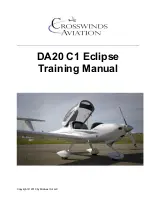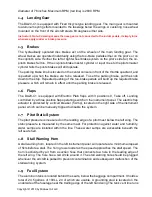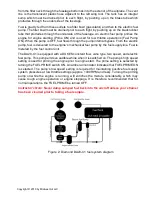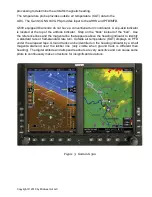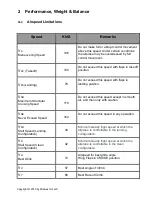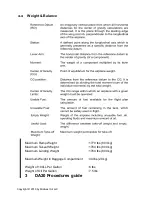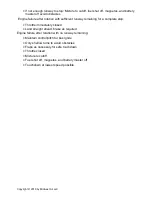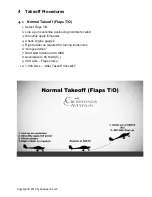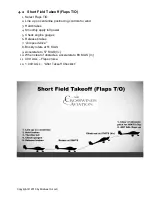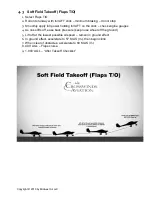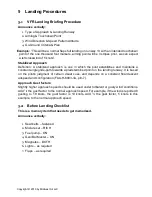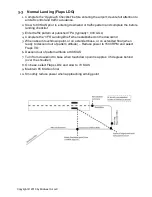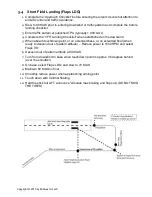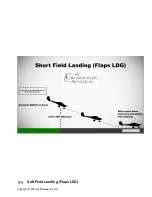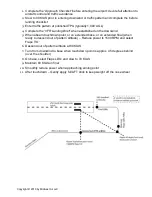
Copyright © 2019 by Midwest Air LLC
diameter of 76 inches. Maximum RPM (red line) is 2800 RPM.
1.4
Landing Gear
The DA20-C1 is equipped with Fixed tricycle type landing gear. The main gear is mounted
to aluminum spring struts mounted to the fuselage below the wings. A castering nose wheel
mounted on the front of the aircraft steers 60 degrees either side.
Instructor’s Note: Castering means the nose gear is not connected to the rudder pedals, it simply turns
when we apply rudder or brake pressure.
1.5
Brakes
The hydraulically operated disc brakes act on the wheels of the main landing gear. The
wheel brakes are operated individually using the toe-
brake pedals either on the pilot’s or on
the copilot’s side. If either the left or right wheel brake system on the pilot’s side fail, the co-
pilot’s brakes fail too. If the co-pilots brake master cylinder or input lines to the pilots master
cylinder fails the pilots brakes will still operate.
The parking brake knob is located on the center console in front of the throttle quadrant, and
is pushed up when the brakes are to be released. To set the parking brake, pull the knob
down to the stop. Repeated pushing of the toe-brake pedals will build up the required brake
pressure, which will remain in effect until the parking brake is released.
1.6
Flaps
The DA20-C1 is equipped with Electric Plain flaps with 3 positions 0, Take off, Landing
controlled by a three position flap operating switch on the instrument panel. The electric flap
actuator is protected by a circuit breaker (5 Amp), located on the right side of the instrument
panel, which can be manually tripped to disable the system.
1.7
Pitot Static System
The pitot pressure is measured on the leading edge of a pitot mast below the left wing. The
static pressure is measured by the same mast. For protection against water and humidity,
water sumps are installed within the line. These water sumps are accessible beneath the
left seat shell.
1.8
Stall Warning Horn
A stall warning horn, located in the left instrument panel, will operate at a minimum airspeed
of 5kts before a stall. The horn grows louder as the speed approaches the stall speed. The
horn is activated by air from a suction hose that connects to a hole in the leading edge of
the left wing. The hole has a red circle around it. The stall warning hole should be plugged
whenever the aircraft is parked to prevent contamination and subsequent malfunction of the
stall warning system.
1.9
Fuel System
The aluminum tank is located behind the seats, below the baggage compartment. It holds a
total of 24.5 gallons of 100LL, 24 of which are usable. A grounding stud is located on the
underside of the fuselage near the trailing edge of the left hand wing The tank vent line runs
Summary of Contents for DA20 C1 Eclipse
Page 1: ...Copyright 2019 by Midwest Air LLC DA20 C1 Eclipse Training Manual...
Page 18: ...Copyright 2019 by Midwest Air LLC 5 5 Soft Field Landing Flaps LDG...
Page 20: ...Copyright 2019 by Midwest Air LLC 5 6 Power Off 180 Procedure...
Page 33: ...Copyright 2019 by Midwest Air LLC Eights On Pylons Maneuver...

